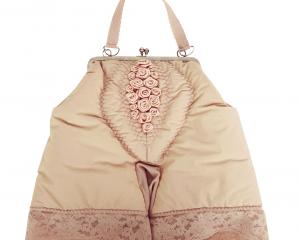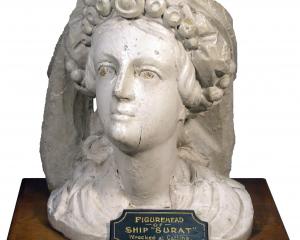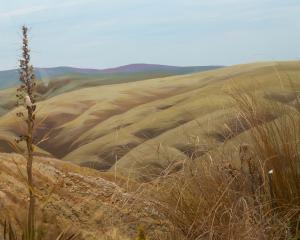
Otago Museum is the largest importer of exotic animals in New Zealand, writes Nick Yeats.
Every week a package arrives on the front desk at Otago Museum. Inside there is a bundle of smaller packages — live butterfly chrysalises, all the way from the Philippines or Costa Rica — bound for a new life in our tropical forest.
The museum’s tropical forest hosts a wide array of tropical butterfly species that are imported in great numbers, making the museum the largest importer of exotic animals in New Zealand. Some species stand out for their beauty or strangeness, and others for both. Troides rhadamantus, the golden birdwing, is one such species.
It belongs to an extensive family of butterflies known as Papilionidae or the swallowtail butterflies. This family is found in great diversity in east and southeast Asia. It also includes the largest group of butterflies in the world: the birdwings. The golden birdwing is one of the most interesting of these species.
Golden birdwings (like all birdwings) are known for their exceptional size, with a wingspan of 10cm-15cm. They are aptly named, having a bird-like flight pattern and feather-like markings on their backs. They are visually stunning with black forewings contrasting with golden hindwings, and bright yellow colouring on the underside of their abdomen. They also have vibrant red hairs under their thorax.
One of their stranger features is that they have thermoreceptors on the veins of their wings and their antennae. These are an adaptation found in some dark-coloured butterflies. Thermoreceptors are sensitive to sudden increases in temperature and prevent the butterflies from overheating when basking in the sun.
The golden birdwing can be found all over the Philippines. However, they most enjoy flying above sun-warmed gullies and creeks. They are very common around Aristolochia tagala, or Indian birthwort, because it is where they often lay their eggs. This is because the leaves are a great food source for caterpillars. In the tropical forest both golden birdwing and the common rose swallowtails love the nectar of our Lantana camara flowers, which is a common weed found in the Philippines.
The golden birdwing is the Philippines’ most traded birdwing butterfly, yet it is also endangered.
So, how are we allowed to import an endangered species? Through CITES, the Convention on International Trade in Endangered Species of Wild Flora and Fauna.
This international agreement between governments aims to ensure that the international trade of wild animals and plants does not threaten their survival. It puts strict controls on the trade of specific animals, and is a way to save them from over-exploitation. For every 10 golden birdwing chrysalises sold by our supplier, one must be returned to the wild.
Although this butterfly is messy and creates an abundance of paperwork around its importation, museum staff and visitors love it due to its uniqueness and beauty. Through CITES we are helping to ensure its conservation, and consider the museum fortunate to be able to share this protected species and others in our living collections with the public.
- Nick Yeats is a Science Communicator at Otago Museum.












